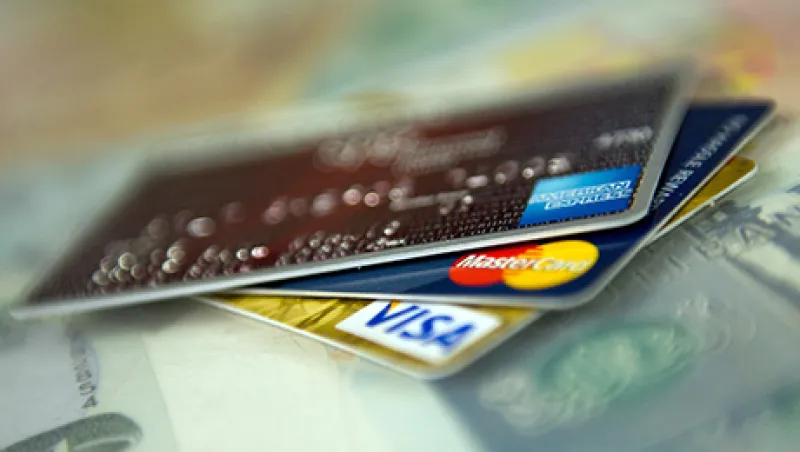Imagine two San Francisco co-workers — friends, scrappy start-up engineers — at lunch at a restaurant. One states incredulously, “Did you know that the credit card is really old? It became widespread in the 1960s” — decades before our wide-eyed software engineer was born — “and the way people pay for things in the physical world hasn’t really seen another major innovation since.” His friend doesn’t say anything, but when the check arrives, he speaks into his Pebble smartwatch a single sentence, starting with his name: “John Doe pays whole check, with his Visa, and adds a 20 percent tip.” He then produces from his wallet a plain black card, also a smart device and slightly heftier than a regular plastic credit card. He hands it to the waiter, who swipes the card and returns it, with no need to sign. As the two leave the restaurant, the amount of the meal is messaged to John, who forwards the text to his friend. “You get the next one, buddy,” John says. His personal digital financial assistant silently logs the expense and the name of his friend. If the favor isn’t repaid in five months, it will advise him not to treat this particular friend to any more lunches.
Payment processing is evolving. Cash is disappearing from everyday life; iPad and iPhone terminals like those manufactured by San Francisco–based Square are everywhere. We’re used to the little plastic wands you can add to your key chain and link to a credit card account — but that’s nothing compared with Coin, the sleek black device that links together all your accounts, allowing you to choose which one you’d like to use when you hand it over at the end of your meal. (Like the Pebble smartwatch, Coin is a successfully crowdfunded microcomputer.)
Coin was introduced as a way of radically slimming down your wallet, of safely moving your plastic clutter online and adding a layer of security for the absentminded or those otherwise concerned about physical credit card loss or theft. The card will send your smartphone a message if the two are separated for much longer than it might take to run the average restaurant transaction. Coin also shuts down if it isn’t used within a user-specified period of time.
But there’s another decided plus to migrating your financial life online, beyond simply tying together all of your accounts. In February Portland, Oregon–based Simple Finance Technology Corp., which has been frequently misidentified as the world’s first brick-and-mortar-free bank, was acquired by BBVA, a banking group based in Spain that owns BBVA Compass, a major lender across the southern U.S. and with interests mostly in Europe. Simple is not in fact a bank — rather, it is an interface that sits between customers and its partner, FDIC-insured Bancorp Bank. Simple’s multidevice interface coordinates all the standard services: online bill payments, transfers and wires. Cash can be withdrawn from ATMs using a Simple Visa.
An online interface that’s just as good as a regular bank isn’t interesting, however. Living your financial life online means all your spending data can be securely sorted and tracked by systems smarter and wiser than you but within your control. I’ve written in this column about services like Mint.com, which monitors spending and even uses machine learning to attempt to identify patterns, and services that offer financial advice, like Wallet.ai. Simple offers a similar service: Its Safe-to-Spend attempts to do for financial health what actual health-tracking tools like the Fitbit do for a person’s physical fitness. Even more interestingly, the company doesn’t charge for overdrafts or failed checks; its general philosophy is to help customers bank better, not to benefit from their mistakes. (Simple is supported by debit card transaction fees and conventional interest on loans, in what has turned out to be a very successful business model.)
As more and more of these kinds of companies and their products arise, we’ll see the banking sector attempt — and perhaps fail — to adapt conventional business models and apposite marketing tactics in order to survive. A massive industry shift is already under way, and it threatens even banks with what are now sufficient, industry-standard online products and services. Now in invite-only stage, Google Wallet will allow the company’s 425 million users to send money directly via Gmail. Rumors have gone around Silicon Valley that Apple is considering adding banking software to its iTunes Store and App Store accounts, of which there are approximately 575 million.
As if in lieu of any real power to compete with new, machine-driven banking start-ups — to say nothing of the tech giants — Bank of America is offering its personal banking customers free consultations with human advisers. (Schedule an appointment online to come in and talk to someone about your financial future.) Recent campaigns have been lauded within the advertising industry for their human-first approach, for crafting stories that brand the company as a sensitive, basically human interpreter of essential human goals centered on quality of life. But whether younger customers will respond to that particular value proposition has yet to be seen. Millennials don’t mind consulting an inhuman array of processors and algorithms about pretty much anything.
When it first launched to nonemployees, Simple introduced a signature all-white card — an immensely effective marketing move that transformed all its first invite-only users into tech lifestyle ambassadors — which is to say, changes in banking and payments are inseparable from conflicts and trends negotiated on the ground. Innovation is propagated by marketing, and marketing is still — even in the age of click-throughs and the collection and mass sale of private user data — a dismal science. Nonetheless, it’s easy to imagine a future in which placing a $20 bill on the table with the lunch check will raise as many eyebrows as simply telling your wearable computer how much your credit card computer is authorized to pay.






